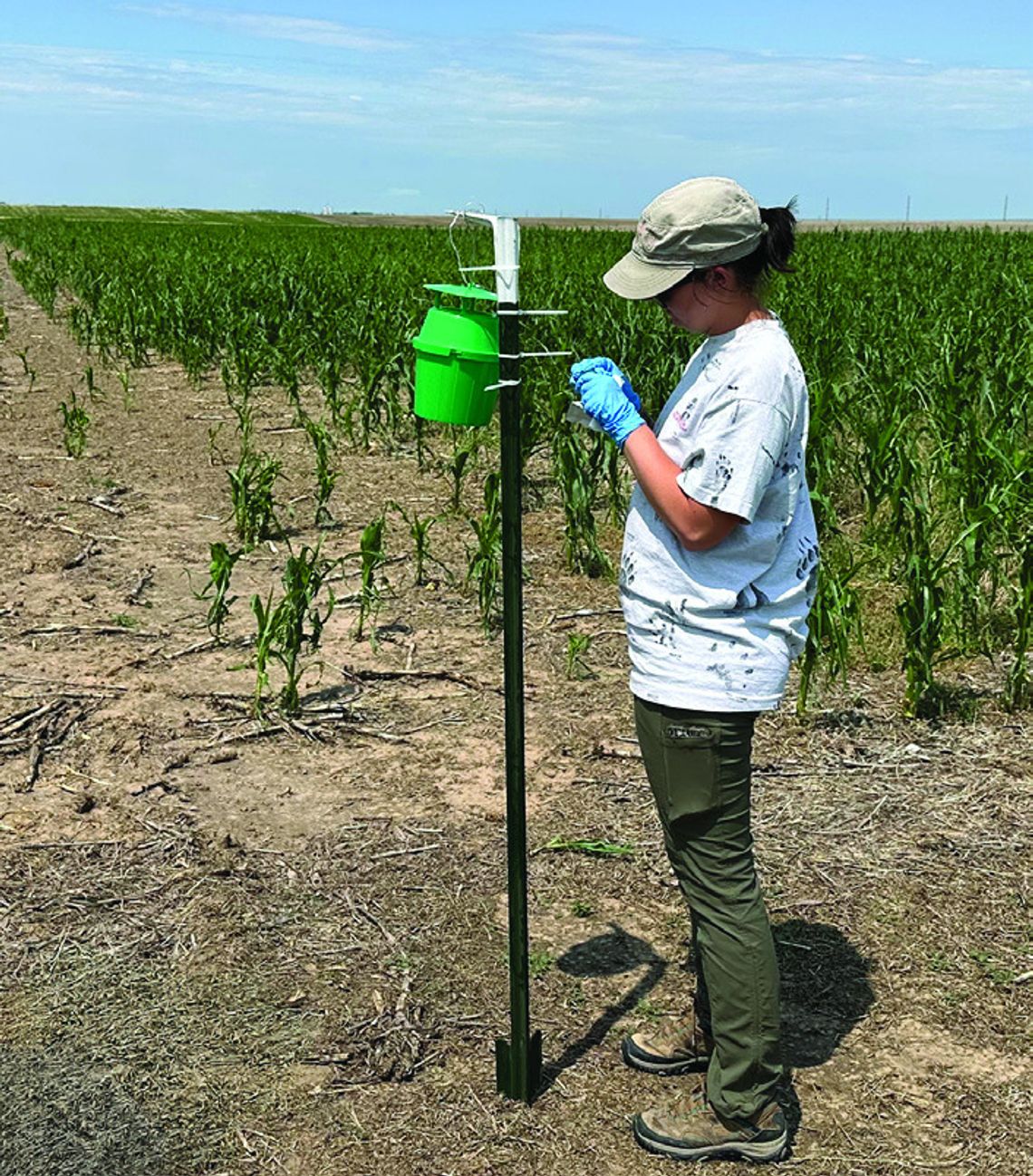Professor and Director of the Plant Health Program
Western bean cutworm can be a serious pest in corn and dry beans.When their population or infestations exceed thresholds, insecticide treatment is warranted, and timely treatment is crucial for management success.
Green bucket pheromone traps (Figure 1) were deployed in several regions in the Panhandle (Figure 2), and the moth flight numbers are picking up (Figure 3). According to degree-days prediction (https://cropwatch.unl.edu/degreedays-prediction-western-bean-cutwormflight- 2025/) moth flight will likely peak on July 16 in Scottsbluff and on July 25 in Sidney and Alliance, which is earlier than those from 2022-2024. A match between moth flight and the late whorl to early tassel stage of corn can result in high levels of infestation.We recommend starting to scout for western bean cutworm egg masses in corn fields immediately. Scouting can be done by using UNL’s speed scouting app or spreadsheet, and more information can be found in this article (https://cropwatch.unl.edu/2020/ scouting-and-treatment-recommendations- western-bean-cutworm/). Corn hybrids with effective Bt protein VIP3A will not need to be treated. Hybrids with Cry1F or without Bt protection against western bean cutworm need to be scouted and treated if above the economic threshold. Insecticide treatment is recommended if 5-8 percent if the corn plants have egg masses or larvae (Figure 3), and the treatment should be made when 95 percent of the plants in a field have tasseled. See more information on treatment recommendations and insecticide options here (https://cropwatch.unl.edu/2020/ scouting-and-treatment-recommendations- western-bean-cutworm/).


